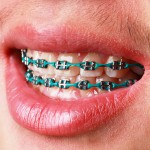
Malocclusion is common and is typically corrected by orthodontic treatment. While there is evidence to demonstrate its technical success there is uncertainty as to whether it improves oral health. In addition to information about the impact of malocclusion and its treatment on caries, periodontal disease and trauma the impact on quality of life also needs to be considered. However the current evidence on this appears to be limited and uncertain.
The aim of this review was to assess both the impact of malocclusion and the impact of orthodontic treatment on oral health.
Methods
The review protocol was registered on the PROSPERO database and followed the PRISMA guidelines . Searches were conducted in the Medline, Embase and Cochrane Database of Systematic Reviews with no language restrictions. Separate searches were undertaken for the impact of malocclusion and the impact of treatment with different inclusion criteria for the two elements. Two reviewers assessed each study independently, with a third reviewer consulted when a disagreement occurred. Outcomes for both questions included change in dental disease state and socio-dental impact [caries, periodontal, plaque, dental trauma, and oral health–related quality of life (OHRQOL]. Study quality was assessed using the Appraisal Tool for Cross- Sectional Studies or Newcastle-Ottawa Scale where studies had been included in Cochrane reviews the risk of bias assessment was incorporated. Data was extracted into 2×2 tables providing a binary analysis of malocclusion vs the outcome of interest.
Results
- 87 studies (5 longitudinal, 82 cross-sectional) evaluating the association between malocclusion and dental disease.
- 41 studies assessed quality of life, 39 included dental trauma 9 examined either periodontal disease or caries.
- The Dental Aesthetic Index (DAI) and the Index of Orthodontic Treatment Need (IOTN) were used most commonly, in 19 and 13 studies respectively.
- For quality of life, the Child Perceptions Questionnaire (CPQ) was used in 17 studies, the Oral Impacts on Daily Performance (OIDP) 6 studies, and Oral Health Impact Profile-14 (OHIP) in 5 studies.
- The overall quality of the included studies was low.
- Meta-analysis was possible for dental trauma with results suggesting that if a child has an overjet of >5 mm, then the odds ratio of them suffering trauma to their incisors was 1.98 (95%CI; 1.8-2.17)
- Correcting prominent incisors resulted in a reduction in trauma from 31.7% to 19.7%. This was a reduction of 12%. However, the orthodontic treatment did not eliminate the chance of injury.
- Because of large variations in that nature of the studies and the data collected additional data pooling and meta-analysis was not possible.
Conclusions
The authors concluded: –
… apart from trauma, there is an absence of evidence on the effects of malocclusion on oral health and the impact of orthodontic treatment on oral health.
Comments
A number of reviews of the two questions addressed by this review have been conducted previously and we have previously considered some of them (Dental Elf – 13th Jan 2016, Dental Elf – 26th Sep 2014). The reviews have adopted a sound methodological approach identifying a large number of studies. However, they most of the included studies are cross-sectional (82) when a prospective cohort design would be most appropriate although not without its challenges. Consequently, the included studies are of low quality and the authors highlight issues regarding information on sampling, lack of clarity on non-responder and response rate information and sample size calculations. The authors highlight in the discussion a lack of studies to specifically address the questions of this review and or the use of outcomes that were not relevant or being inappropriately applied. Clearly there needs to be greater consensus and use of the most appropriate outcomes measures as well as use of the most appropriate study design to properly address these relevant questions,
Links
Primary Paper
Macey R, Thiruvenkatachari B, O’Brien K, Batista KBSL. Do malocclusion and orthodontic treatment impact oral health? A systematic review and meta-analysis. Am J Orthod Dentofacial Orthop. 2020 Jun;157(6):738-744.e10. doi: 10.1016/j.ajodo.2020.01.015. PMID: 32487303.
Other references
Dental Elf – 13th Jan 2016
Impact of malocclusion on oral health related quality of life is small
Dental Elf – 26th Sep 2014
Malocclusion: review finds that it has an adverse effect on quality of life
